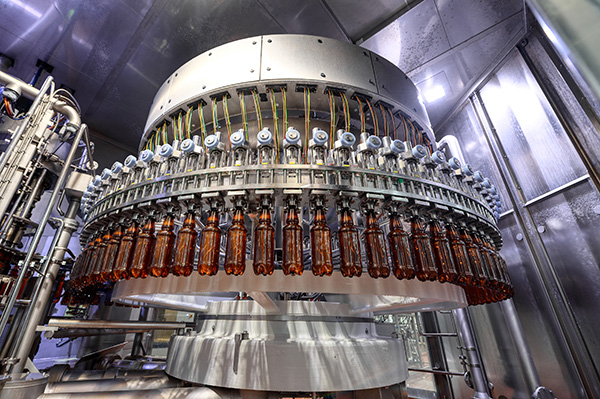Artificial intelligence is upgrading supply chain planning and how quickly manufacturers respond to constant uncertainty.

By Rohit Tripathi, VP of Industry Strategy, Manufacturing at RELEX
For decades, manufacturers facing shifting tariffs turned to a familiar set of responses: stockpiling, reclassifying goods, renegotiating supplier terms, or, in some cases, relocating production. It could be weeks later by the time emergency meetings were planned, finance started modeling scenarios in spreadsheets, and legal explored reclassification possibilities.
In today’s environment, when rates on categories like steel, aluminum, and electronics change by the week, that plan is obsolete. But artificial intelligence (AI) is completely transforming this process and giving brands the agility to respond.
With the right data infrastructure and tools in place, manufacturers can simulate tariff impacts, explore substitutions, reconfigure sourcing, and optimize inventory and pricing before changes take effect. The process that took weeks is now happening in minutes thanks to AI. Smart businesses today are treating tariff strategy as a core component of integrated supply chain planning.
Before even considering changes to sourcing or shipping, manufacturers must first examine the foundation of their operations: their product and customer mix. In today’s unstable environment, excess inventory is tying up a significant source of capital and limiting how flexible companies can be.
Now is the time for manufacturers to revisit what they make, who they make it for, and how many variations they truly need. If businesses are carrying inventory that rarely sells, it’s wasting space and money.
Simplifying product lines while doubling down on high-performing SKUs creates a leaner, more adaptable inventory footprint. So, how can you quickly evaluate your product mix and learn what’s actually making an impact? AI makes this analysis practical. It can segment demand, flag underperforming products, and model the impact of consolidation or substitution across the full network.
AI enables companies to make these decisions even faster and factor a large amount of data into the analysis, like real-time market shifts and geopolitical changes. More importantly, it can do this analysis continuously, not just during annual planning cycles.
This kind of realignment reduces tariff exposure by cutting unnecessary complexity and aligning supply to what actually drives margin. Once companies have streamlined their product mix, they can also use AI for another downstream challenge: tariff avoidance.
In the past, companies used physical modifications to legally reclassify products under less expensive tariff categories, like adding pockets below the waistline of a shirt so they’d fall into a different classification for blouses or putting felt on the bottom of shoes so they fit the description of slippers. But finding and validating those adjustments took time and coordination across many teams.
Advanced planning platforms can now factor in real-time tariff structures, simulate cost outcomes, and recommend alternate suppliers or recipes in hours, rather than weeks. That means planners can evaluate thousands of combinations between the product, region, and supplier dynamically and adjust with speed and precision. It can even predict how substitutions might affect final product attributes, allowing companies to quickly adapt formulations and maintain quality without extensive physical testing.
Access to this deeper analysis gives companies the ability to run through different alternatives. AI finds dozens, ranks them by feasibility and impact, and updates those recommendations as conditions change.
AI’s ability to quickly simulate a number of scenarios is a key feature as companies shift toward regionalized supply chains. The technology can simulate landed costs across geographies, allowing manufacturers to assess the impact of tariffs across various sourcing, production, and distribution scenarios.
AI can run comparisons across sourcing locations, transport modes, and warehouse configurations to calculate the full cost of getting a product to a market. These simulations extend beyond tariffs alone. Transportation costs, lead times, warehousing constraints, and even carbon footprint considerations can be layered into the model. The outcome is a more complete and strategic view that allows brands to maximize revenue and adhere to their sustainability targets.
Modern systems allow planners to define business rules that adapt to external thresholds and shift toward modular risk management. The most resilient manufacturers are incorporating tariff logic into their regular planning workflows instead of treating each new change as an isolated event.
For example, if tariffs rise beyond a set percentage, AI-enabled programs can automatically adjust sourcing tiers, switch transportation modes, or rebalance distribution. This approach, often described as touchless planning, enables companies to adjust business rules on the fly and act quickly without requiring manual intervention each time.
These workflows are especially powerful when disruptions hit suddenly. A major agricultural producer using AI-driven planning was able to respond within 10 days to an avian flu outbreak that reduced supply by 10%, dynamically reprioritizing demand and resetting customer expectations. That same ability to adapt fast and communicate clearly is exactly what brands can do now in response to tariff disruptions.
But it’s important to realize that AI won’t revolutionize a company’s supply chain planning unless it’s willing to rethink outdated workflows, close data gaps, and embrace the complexity of today’s interconnected networks. It’s not a magic wand to fix all of these issues unless there is a foundation of good data to feed it.
AI also needs to be equipped to work with the human planner. It’s tempting to jump right into the tech once a company decides to automate planning to justify the investment, but often the biggest challenges come from trying to run before walking. Teams need to be properly trained to use these new technologies and understand how they fit into what they already do.
What’s really happening here is a fundamental shift in how companies approach uncertainty. The old mindset was all about avoidance: delay impact, reduce exposure, minimize risk. But in a world where volatility is the new normal, agility becomes the more powerful differentiator.
The manufacturers that are thriving aren’t the ones trying to dodge every tariff change. They’re the ones using disruption as a catalyst to clarify their product strategy, rethink customer priorities, and redesign operations for flexibility.
With AI, that kind of adaptability becomes scalable across the entire organization. By moving tariff strategy upstream and embedding it in inventory, sourcing, and supply chain planning, companies can stop chasing headlines and start setting direction. The next round of trade barriers is coming. The question is no longer how to dodge them but how ready you’ll be when they hit.
The companies with the most adaptive systems and the clearest view of what really drives their business are the ones fundamentally changing their future operations for the better.

About the Author:
Rohit Tripathi, VP of Industry Strategy for Manufacturing at RELEX, specializes in supply chain and business operations including RELEX’s AI-led transformation. He has more than 25 years of experience managing global teams in the US, India, Brazil, and Europe, delivering AI enabled products and solutions for supply chain, IoT, customer experience, and supply chain resiliency.
In this episode, I sat down with Beejan Giga, Director | Partner and Caleb Emerson, Senior Results Manager at Carpedia International. We discussed the insights behind their recent Industry Today article, “Thinking Three Moves Ahead” and together we explored how manufacturers can plan more strategically, align with their suppliers, and build the operational discipline needed to support intentional, sustainable growth. It was a conversation packed with practical perspectives on navigating a fast-changing industry landscape.